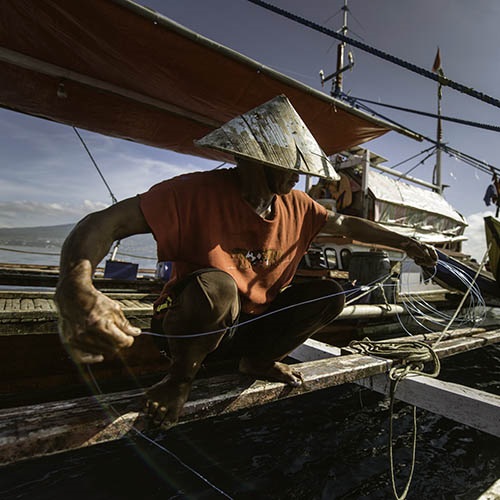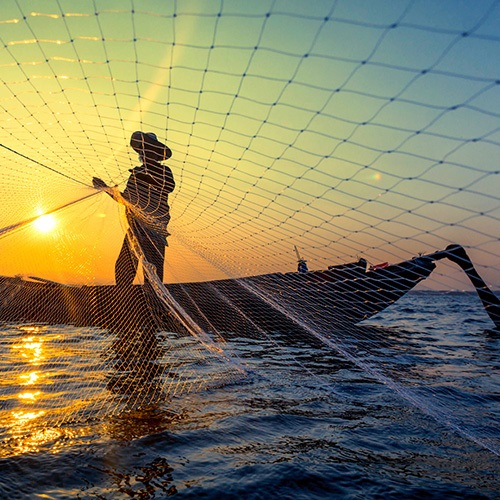Sustainable Fisheries Greenland and Greenland lumpfish
Amount awarded £46,381
This project is quantifying bycatch in the MSC certified West Greenland lumpfish fishery and looking for ways to minimise it. The fishery was recertified in February 2021 and has reduced its bycatch of diving birds, but several conditions of certification involve work on reducing bycatch levels further.
Birds can become entangled when diving close to gillnets, and even a relatively low number of deaths can put additional pressure on populations that are already vulnerable. But currently there are no good mitigation measures publicly available to fisheries that both protect birds without significantly reducing the amount of seafood they can catch.
Lumpfish is a key income for many small-scale fishers in Greenland, so maintaining a sustainable certified fishery is vital to ensure optimal income for those involved.
If there are particularly high rates of bycatch in certain areas or at certain times, the fishery could temporarily close to avoid bycatch. But this could seriously affect the livelihoods of fishers, and so the project is testing alternate ways of reducing bycatch, such as changing the nets used.
.jpg?sfvrsn=c058e7a9_0)
Modified gillnets reduced bycatch levels
Through this Science and Research Fund grant, Sustainable Fisheries Greenland is collecting data on bycatch levels and evaluating the effects of the fishery on bird populations. The project is trialling whether a modification made to the gillnets by adding a bright white mesh to the bottom, helps diving birds to see it more easily.
The tests have revealed that the modified gillnets had lower bycatch than the traditional nets, reducing the bycatch by around half. However, the modified nets decreased the lumpfish catch rate by 21% compared to the traditional nets, demonstrating the difficulties of effective bycatch management. In addition, robust data was difficult to collect because of Covid-19 and reduced demand resulting in the fishing season being cut short. So, it has been recommended the modifications should be tested further in a fully commercial setting – instead of during a research trip – in the 2022 fishing season.
New insights into seabird bycatch impacts
The research also estimated the total common eider bycatch in the study and discovered that adult females seem to be most vulnerable to being caught. Common eider hunting is a culturally important aspect of Greenland society, therefore having accurate data on how fishing influences the bird’s population dynamics is required to predict population changes.
No endangered, threatened or protected (ETP) species were found to be caught in significant amounts, including zero long-tailed ducks. This provides vital data for upcoming audits that will be assessing impacts to ETP species.
Female lumpfish were also tagged during the fieldwork to provide information on migration patterns in and outside of the spawning season, with results expected spring 2022.
“Without this funding, there would be little progress making us unable to increase the understanding of bycatch dynamics and impossible for the fishery to improve. We want to signal our commitment to sustainability globally and MSC helps us do that.”
Sustainable Fisheries Greenland
Find out more

Our impact projects
Discover projects supported through the Ocean Stewardship Fund that are helping to grow sustainable fishing worldwide.

The Ocean Stewardship Fund
The Ocean Stewardship Fund offers grants to both MSC certified sustainable fisheries and improving fisheries.
